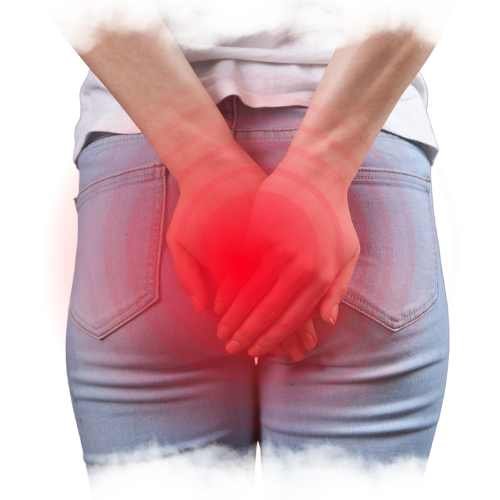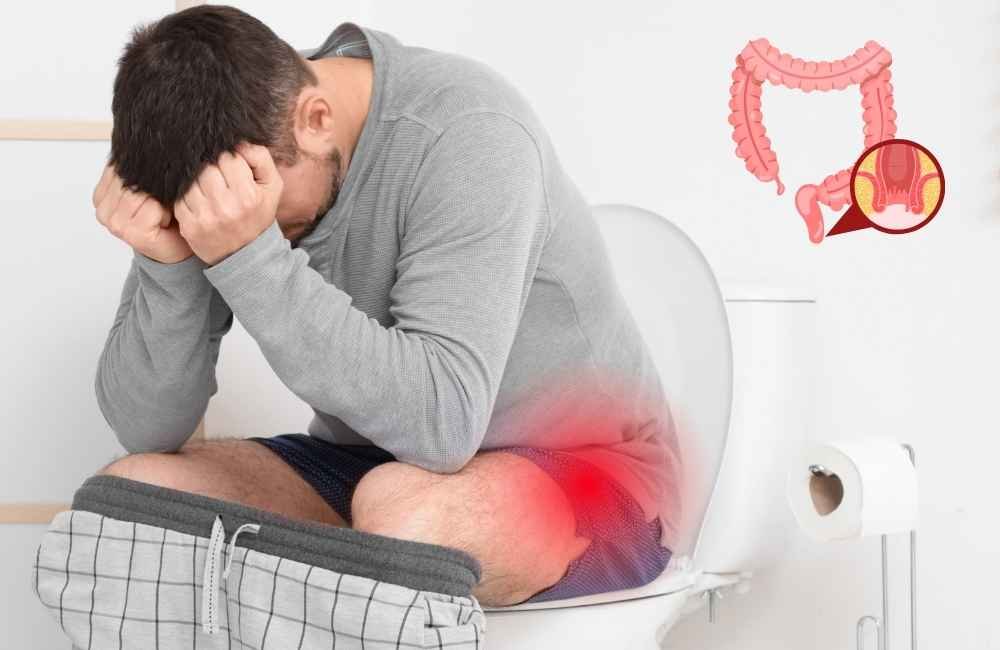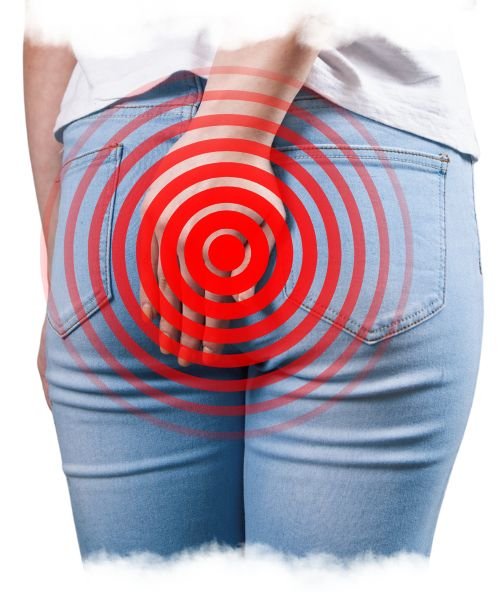Don’t Suffer in Silence
Get Relief from Piles in a Daycare!

What are Piles?
About Piles Treatment
Piles, medically known as hemorrhoids, are swollen and inflamed veins located in the lower rectum or around the anus. They can form inside the rectum or outside under the skin around the anus. This can cause pain, itching, bleeding when you go to the bathroom, and discomfort. In many cases, piles can be caused by chronic constipation, straining while passing stools, prolonged sitting, or a low-fiber diet. While some cases resolve on their own with lifestyle changes, others may require medical attention.
Today, laser piles treatment in Bangalore is a highly effective and minimally invasive solution. It ensures faster healing, less pain, and a lower risk of recurrence. Whether it’s early symptoms or advanced conditions needing laser piles surgery, getting the right care from experienced piles surgeons can make all the difference. At Hari Laser Clinics, Dr. Varun Kumar j Offers professional laser treatments that focus on each patient’s needs. This ensures a safe recovery and long-lasting relief.
Freedom from Piles in a Day
Don’t Suffer Anymore!!

Book your Appointment!
Laser Piles Treatment in Bangalore
Are you struggling with piles? You’re not alone — piles, or hemorrhoids, are a common condition affecting people of all ages. At Hari Laser Clinics, we specialize in providing advanced piles treatment in Bangalore with a focus on patient comfort and lasting relief.
Our clinic has the latest technology for laser piles surgery. This is a modern and gentle procedure. It causes less pain, reduces bleeding, and helps you recover faster.
We have a team of skilled and caring piles surgeons in Bangalore. We focus on treating both internal and external hemorrhoids with care and accuracy.
If you’re searching for the best piles doctor in Bangalore, look no further. Our team will do a complete check-up and provide treatment options based on your symptoms and how serious your condition is. This applies to both early-stage hemorrhoids and those that need laser treatment for piles.
Take the first step toward relief with safe, effective, and hassle-free piles care, because living pain-free is possible.
Minimally Invasive Surgery
Miniamal Blood Loss
No Wounds
One Day Surgery
Painless Surgery
USFDA Approved
Book Appointment
Where Are Piles Seen- Understanding Their Position
Piles can appear in different areas of the anal and rectal region. Those are categorized based on their exact position. Understanding where piles occur helps in identifying the type and choosing the right treatment approach. Below are the common types based on their location:

Types of Piles
- Internal Piles: Form inside the rectum, out of view. Not usually painful but often causes bright red bleeding during bowel movements.
- External Piles: Develop under the skin around the anus. Can be seen or felt as lumps. Often cause pain, itching, and sometimes bleeding.
- Prolapsed Hemorrhoids Start as internal, but bulge out through the anus. May retract on their own or require manual intervention. Can cause discomfort, bleeding, and a sensation of fullness.
- Thrombosed Hemorrhoids A blood clot forms within an external hemorrhoid. Typically appear as a purple/blue, hard lump near the anus. Usually painful and tender to the touch.
Symptoms of Piles
Piles can show up with a range of noticeable signs. Recognizing the early signs of piles can help in timely and effective pile treatment. Below are some of the most common piles symptoms that may indicate the presence of hemorrhoids/piles.
Internal Hemorrhoids
- Pain-free Bleeding: Often unnoticed until bright red blood appears on toilet paper, stool, or in the bowl
- Prolapse risk: May bulge out during bowel movements and retract naturally or with gentle manual aid
External Hemorrhoids
- Bleeding during bowel movements (bright red blood)
- Itching or irritation around the anus
- Pain or discomfort while sitting
- Swelling or a lump near the anus
- Mucus discharge after passing stools
- Feeling of incomplete bowel evacuation
- Soreness or redness in the anal area
- Protrusion of hemorrhoids outside the anus (in case of external piles)

Thrombosed Hemorrhoids
- Blood clot formation: A hardened lump forms and turns purple or blue
- Severe pain & swelling: Sudden, intense discomfort that may affect daily activities.
Prolapsed Hemorrhoids
- Tissue protrusion:: Internal hemorrhoids push out through the anus
- Discomfort & fullness: Sensation of pressure, pain, and potential bleeding when hydrated and irritated.
If you’re having these symptoms often, don’t ignore them. Early piles can sometimes be managed with diet, water intake, and home remedies. But if the problem keeps coming back or gets worse, it’s best to get medical help.
Today, many people choose laser surgery for piles as it is safe, less painful, and helps you recover faster. For those looking for effective piles treatment in Bangalore, visiting a specialist can help you choose the right treatment based on your condition.
Causes of Piles
Below are some common causes of piles that can lead to discomfort and complications if not addressed early. Understanding these factors is important for effective prevention and treatment.
- Chronic constipation or straining during bowel movements
- Aging, which weakens tissues in the rectum and anus
- Sitting for long periods, especially on the toilet
- Low-fiber diet
- Obesity or being overweight
- Pregnancy and childbirth
- Heavy lifting or physical strain
- Hereditary factors or family history
- Lack of physical activity
- Frequent diarrhea or bowel irregularities

Diagnosis of Piles
Accurate diagnosis of piles is essential for the effective treatment of piles. Below are the common methods used by piles specialists in Bangalore or performed by our proctology hospital in Bangalore.
- A physical exam to check for visible signs of piles
- A digital rectal exam to feel for internal piles.
- Anoscopy to examine the inside of the rectum.
- Endorectal Ultrasound Imaging for detailed assessment of the anorectal area
- Colonoscopy used to screen for colorectal cancer or remove polyps.
- Proctoscopy examination performed of the rectum and anus for signs of piles/hemorrhoids or other conditions.
If you are diagnosed with piles, the next step is to explore effective treatment options for piles in Bangalore. Laser treatment for piles in Bangalore is a modern, safe, and painless procedure that helps you recover quickly.
It precisely targets swollen veins, reduces discomfort, and lowers the chance of recurrence. Choosing laser hemorrhoid treatment or minimally invasive piles surgery in Bangalore helps patients heal faster and get better results. This is why many people in the city choose it.
How to Identify Different Types of Piles
| Pile Type | Location | Common Signs |
|---|---|---|
| Thrombosed | Lump near anus | Severe pain. swelling, hardened bluish lump |
| Internal | Inside rectum | Painless bleeding, mucus leakage, possible |
| External | Around anus | Pain. itching, visible lump |
| Prolapsed | Bulging outside anus | Pain. bleeding. mucous discharge |
Piles Laser Treatment in Bangalore
Laser piles treatment in Bangalore is a highly effective, minimally invasive procedure that offers long-lasting relief from painful hemorrhoids. This advanced technique uses laser energy to precisely target and shrink the affected blood vessels.
The procedure requires no surgical cuts, ensuring less bleeding, reduced pain, and faster healing compared to conventional methods. As a daycare treatment for piles, patients can go home the same day and resume their normal routine quickly.
The treatment involves the use of a high-intensity laser probe to coagulate the hemorrhoidal tissues. This causes controlled boiling of the swollen veins, leading to their shrinkage and eventual healing. Laser treatment for hemorrhoids is ideal for Grade 2 and Grade 3 cases, offering minimal damage to surrounding tissue and a lower risk of infection or recurrence.
Worried about the piles laser treatment cost in Bangalore? Hari Laser Clinics offers transparent pricing, along with expert care and guidance, making it a trusted choice for effective piles treatment.
Take the first step toward a pain-free life.
Book your consultation today and experience advanced, safe, and effective treatment at Hari Laser Clinics.
When Should You See a Proctologist for Piles Treatment?
Piles, or hemorrhoids, are common and often manageable with home remedies and lifestyle changes. If symptoms continue or get worse, it’s important to get help from the best proctologist in Bangalore. They are experts in treating issues related to the rectum and anus.
You Should See a Proctologist If You Experience:
- Persistent Pain or Discomfort
- Bleeding During or After Bowel Movements
- Swelling, Lumps, or Prolapse
- Chronic Constipation or Straining
- No Relief from Home Remedies
- Recurring Piles
Our experienced proctologists use advanced diagnostic tools and offer minimally invasive laser treatments for piles in Bangalore. Safe, stitch-free, and with faster recovery, laser treatment is ideal for patients looking for effective and permanent relief.
Why Choose us for Piles Treatment?
Advanced Laser Techniques
We use USFDA-approved laser treatments for painless and scar-free piles removal. These minimally invasive techniques ensure faster recovery and reduced pain compared to traditional methods.
Expert Care by Dr. Varun Kumar J
Dr. Varun Kumar J ensures each treatment is personalized for the patient’s needs, providing comprehensive care for long-term relief.
Quick Recovery
Most patients can resume normal activities within 24 hours due to our non-invasive procedures and fast healing.
Post-Surgery Support
Our dedicated team offers post-treatment guidance, including follow-ups and recovery tips to promote optimal healing.
Painless Treatment for Piles in Bangalore
At Hari Laser Clinics, we offer painless laser surgery for advanced piles. This helps you recover quickly and return to your normal life soon.
Commonly Asked Questions
What is the recovery time after laser treatment for piles?
Most patients can return to their normal activities in 2-3 days after the procedure. Full recovery might take a week.
Is laser treatment for piles painful?
Laser treatment is less painful compared to traditional surgery, with most patients experiencing minimal discomfort during recovery.
Can piles recur after laser piles treatment?
Laser treatment lowers the risk of coming back. Eating a lot of fiber and keeping good bowel habits can help even more.
How do I know if I need laser treatment for my piles?
If you experience persistent symptoms despite conservative treatments, or if you have large, painful hemorrhoids, laser treatment may be recommended. A consultation with Dr. Varun Kumar J will help determine the best course of action.
Are there any side effects of laser piles treatment?
Side effects are usually small. They can include some pain, bleeding, or infection. These can often be treated with medicine and good care after the surgery.
Best Foods to Help with Piles (Hemorrhoids)
Eating the right foods can ease the symptoms of piles and support faster healing. A fiber-rich diet helps soften stool and reduces strain during bowel movements. Below are the recommended Foods:

- High-Fiber Fruits: Apples, bananas, pears, papaya, and berries
- Vegetables: Broccoli, spinach, carrots, and sweet potatoes
- Whole Grains: Oats, brown rice, whole wheat bread, and quinoa
- Legumes: Lentils, beans, chickpeas, and peas
- Nuts & Seeds: Almonds, flaxseeds, and chia seeds (in moderation)
- Water: Drink plenty of water to stay hydrated and support digestion
- Probiotics: Curd, yogurt, and fermented foods for gut health
Avoid spicy foods, oily snacks, caffeine, and alcohol as they can worsen symptoms.
A balanced diet, combined with regular physical activity, helps manage and prevent piles effectively. Check Best Foods to Eat for Piles.
Video Guidence for Laser Piles Treatment in Bangalore
Stop Piles Before They Start – Prevention & Treatment Tips
- Best Foods to Eat for Piles
- Best Exercises to Prevent Piles
- Sitz Bath for Piles
- Natural & Home Remedies for Piles
- Do's & Dont's to Prevent Piles
- Managing Piles During Pregnancy
- Grades of Piles
- Myths & Facts about Piles
